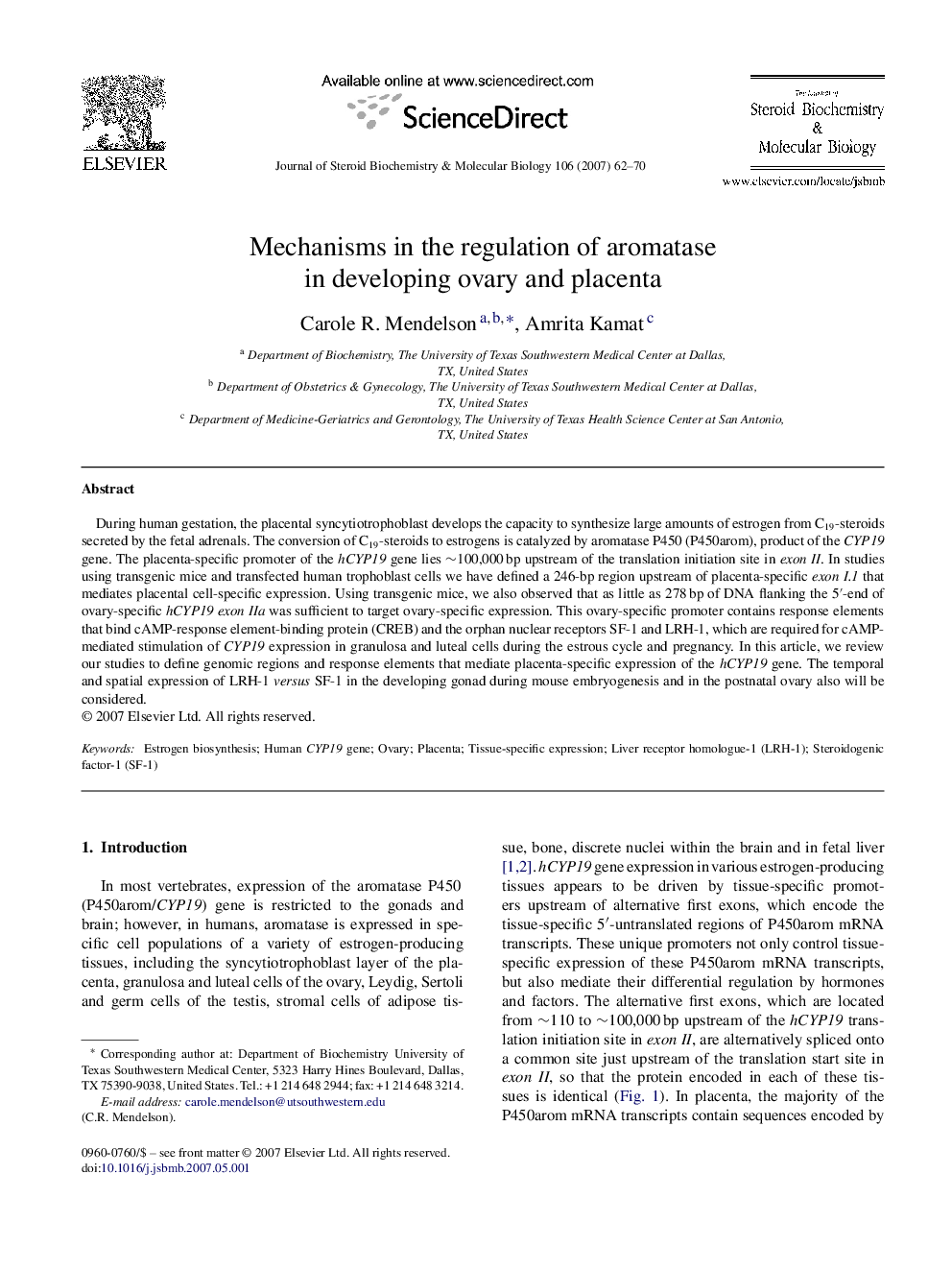| Article ID | Journal | Published Year | Pages | File Type |
|---|---|---|---|---|
| 1992237 | The Journal of Steroid Biochemistry and Molecular Biology | 2007 | 9 Pages |
Abstract
During human gestation, the placental syncytiotrophoblast develops the capacity to synthesize large amounts of estrogen from C19-steroids secreted by the fetal adrenals. The conversion of C19-steroids to estrogens is catalyzed by aromatase P450 (P450arom), product of the CYP19 gene. The placenta-specific promoter of the hCYP19 gene lies â¼100,000Â bp upstream of the translation initiation site in exon II. In studies using transgenic mice and transfected human trophoblast cells we have defined a 246-bp region upstream of placenta-specific exon I.1 that mediates placental cell-specific expression. Using transgenic mice, we also observed that as little as 278Â bp of DNA flanking the 5â²-end of ovary-specific hCYP19 exon IIa was sufficient to target ovary-specific expression. This ovary-specific promoter contains response elements that bind cAMP-response element-binding protein (CREB) and the orphan nuclear receptors SF-1 and LRH-1, which are required for cAMP-mediated stimulation of CYP19 expression in granulosa and luteal cells during the estrous cycle and pregnancy. In this article, we review our studies to define genomic regions and response elements that mediate placenta-specific expression of the hCYP19 gene. The temporal and spatial expression of LRH-1 versus SF-1 in the developing gonad during mouse embryogenesis and in the postnatal ovary also will be considered.
Related Topics
Life Sciences
Biochemistry, Genetics and Molecular Biology
Biochemistry
Authors
Carole R. Mendelson, Amrita Kamat,
